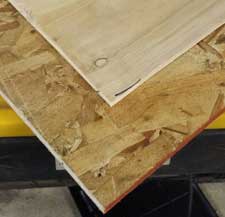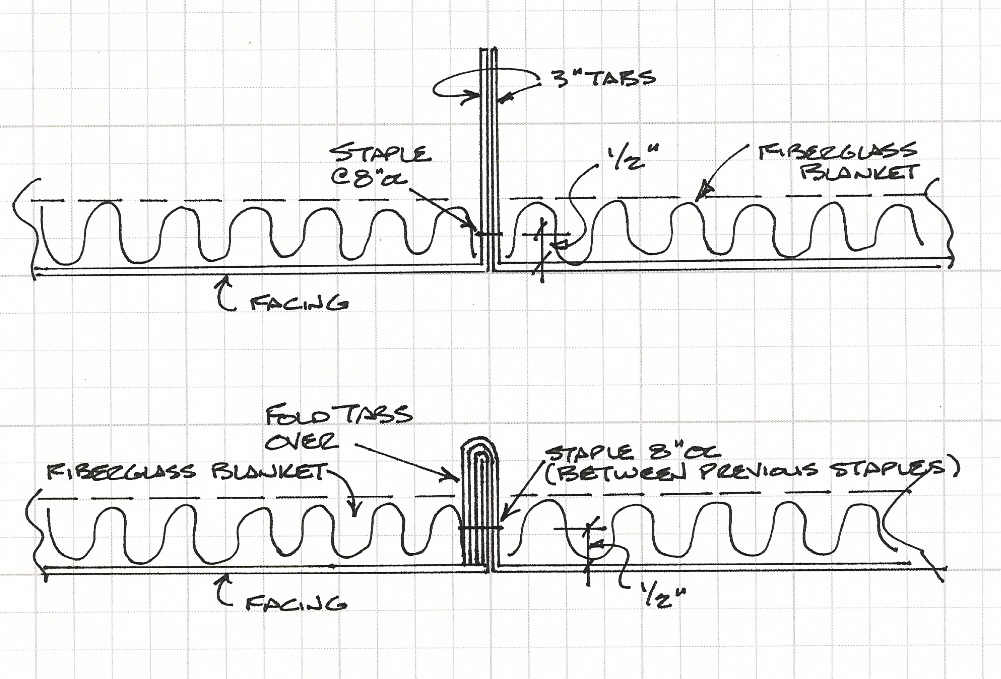Plywood or OSB; OSB or Plywood?
Oriented strand board (OSB) long ago became the market leader, in relationship to plywood. As much as 75% of all sheathing is now OSB, thanks mostly to cost conscious buyers.
Prices for commodities like structural panels are notoriously volatile, and plywood can often be nearly double the price of comparable OSB sheathing. This can result in a savings of hundreds, if not thousands of dollars on an average OSB sheathed post frame building.
OSB versus Plywood Structural Differences
APA – The Engineered Wood Association (the main trade group representing panel manufacturers) says there is no real difference between the two panels. The structural characteristics are equivalent, and they can be used interchangeably. Both are rated Exposure 1 for temporary vulnerability to the weather; they have equivalent nail withdrawal resistance; and they’re installed using the same methods and construction details. However, there are differences.
OSB has more going for it than just cost. “Green” folks appreciate it can be made from small, fast growing trees, many of which come from tree farms rather than forests. OSB boasts a more consistent density. While a sheet of plywood might be 5 to 7 plies thick, a sheet of OSB is made from as many as 50 strand layers packed and compressed into the same thickness. There’s no equivalent of the weak spots which can be left in plywood when knotholes in adjacent plies overlap.
OSB versus Plywood Moisture Reaction
The biggest difference between the two panels is how they react when exposed to large amounts of moisture over extended time periods. With the exception of projects in very arid regions, sheathing and flooring panels are routinely covered with rain, snow, and ice during construction delays. This is where plywood has the edge.
When plywood gets wet, it tends to swell consistently across the sheet, and then returns to its normal dimensions as it dries out. It dries out relatively quickly, and the swelling is usually not enough to affect floor or roof finishes.
OSB takes longer to get wet than plywood but also takes longer to dry out. When used as roof sheathing, this tendency to hold moisture means it can degrade faster than plywood when exposed to chronic leaks.
When OSB does get wet it also tends to swell along the edges, and those edges stay swollen even after the material has dried out. Swollen edges have been known to telegraph visible ridges called “ghost lines” through asphalt roof shingles (just another reason to use steel roofing over purlins for pole barns).
Manufacturers insist OSB’s moisture problems have been corrected, thanks to the development of water-resistant edge seals. But of course that edge seal is lost when panels get cut on site, as they often do.
Screw Adherence in OSB versus Plywood
For post frame applications where screws will be placed into sheathing only (rather than into roof purlins or wall girts), steel roofing manufacturers specify the use of plywood, rather than OSB, as screws have a greater propensity to pull out of OSB under a wind load.
There you are…it’s 27 of one and 14 of another, but when it comes down to it…you need to weigh the pros and cons of how the osb/plywood will be used to make a conscientious choice.









Interesting
Will osb be good for skirting in a camper for the winter with insulation board
Not if exposed to the weather.
Our comerical roof keeps leaking…several outbreaks of rain/water coming into the business….No roofer appears to know what to do to stop it?
Hard to believe anyone knows what they are doing. Roof was a Particle roof and fell apart…..Was told that Plywood should have been used as it will last. WHAT IS THE ANSWER HERE…WHAT IS THE TRUTH IN PREVENTION! SPENT THOUSANDS OF DOLLARS FOR MOLD RESTORATION…CONTINUES TO LEAK WATER. DO NOT KNOW WHAT OR WHO TO TRUST….LOSING A TENANT!!!
Please send photos of roof from exterior and interior to PoleBarnGuru@HansenPoleBuildings.com